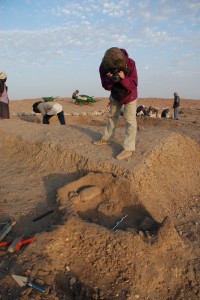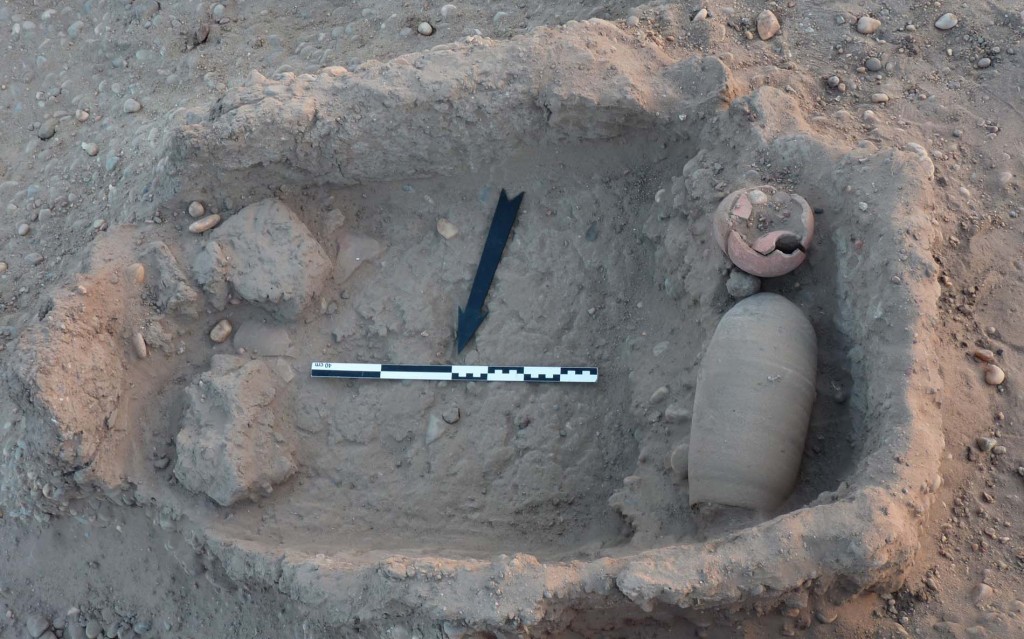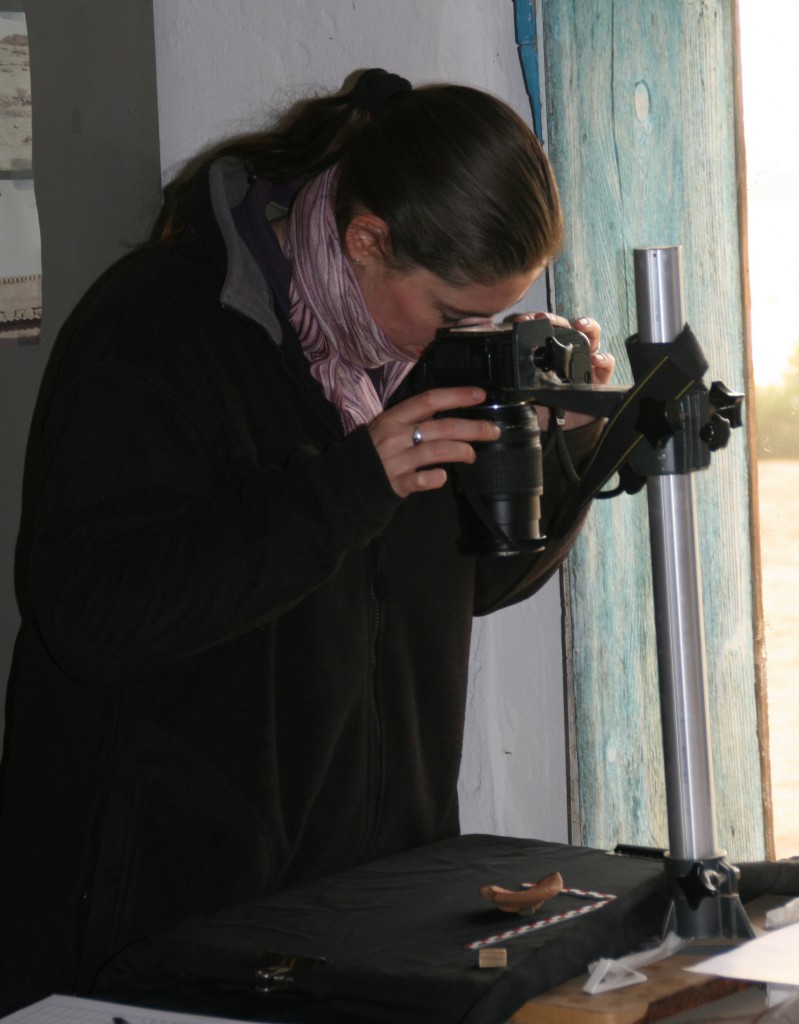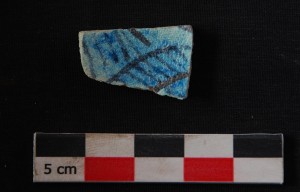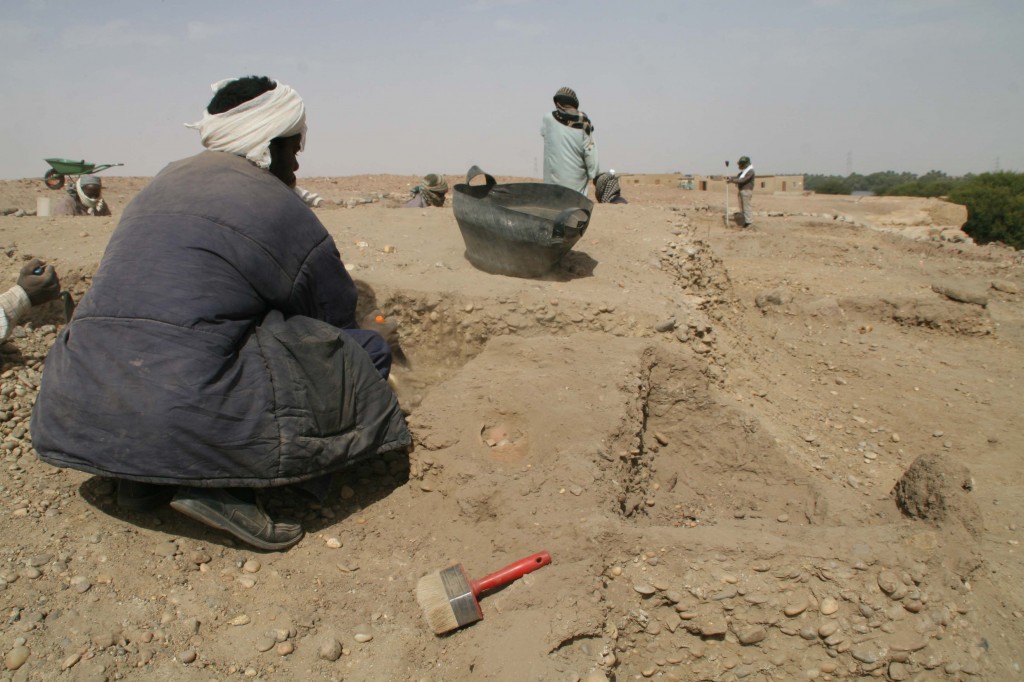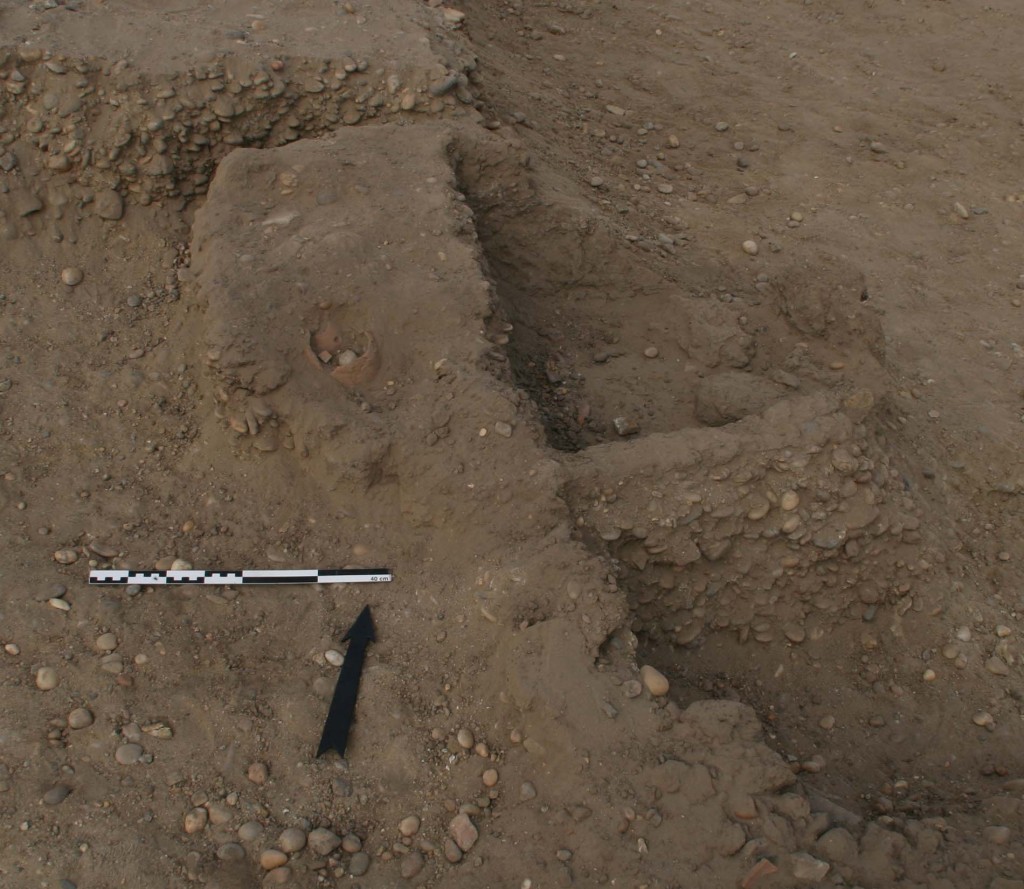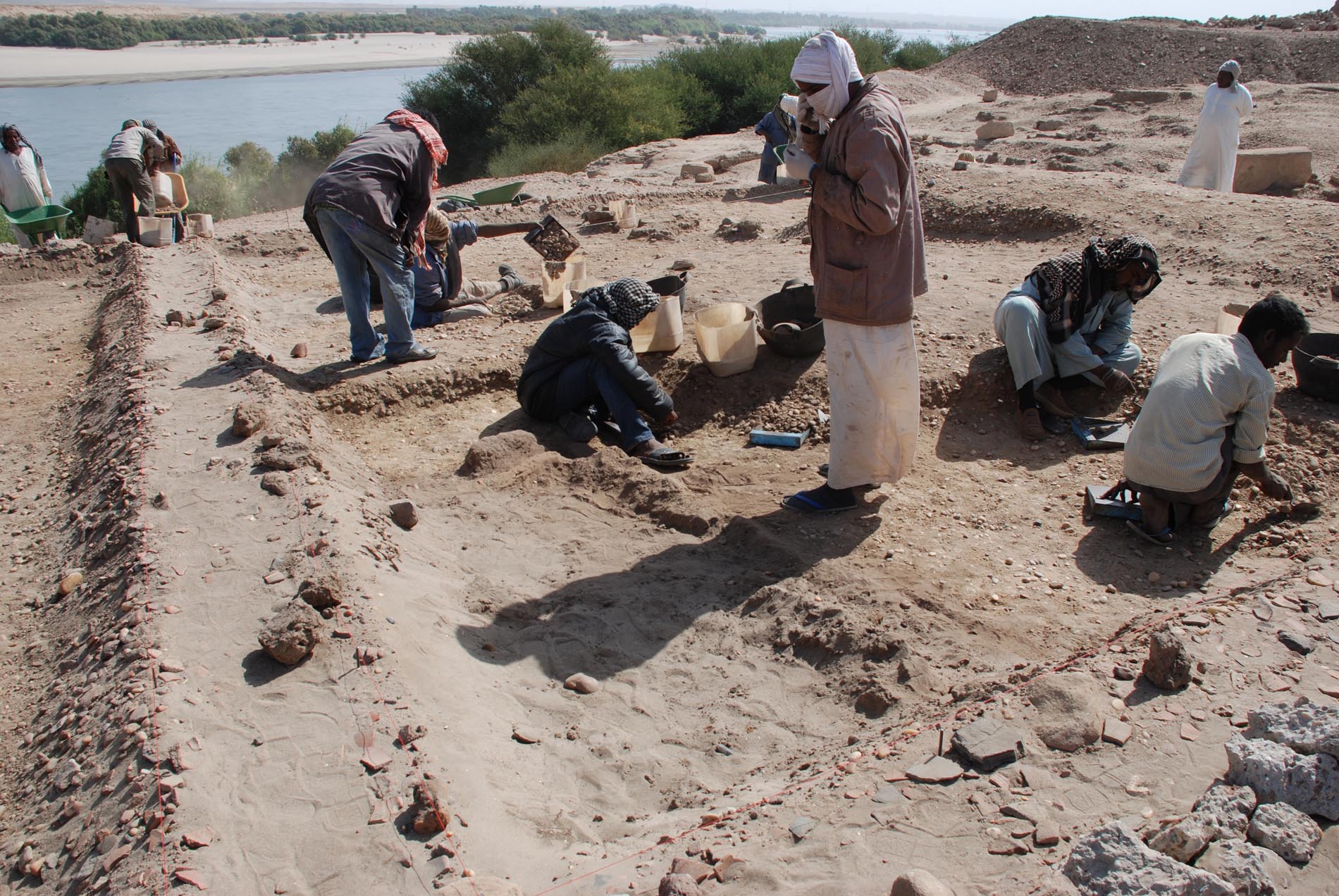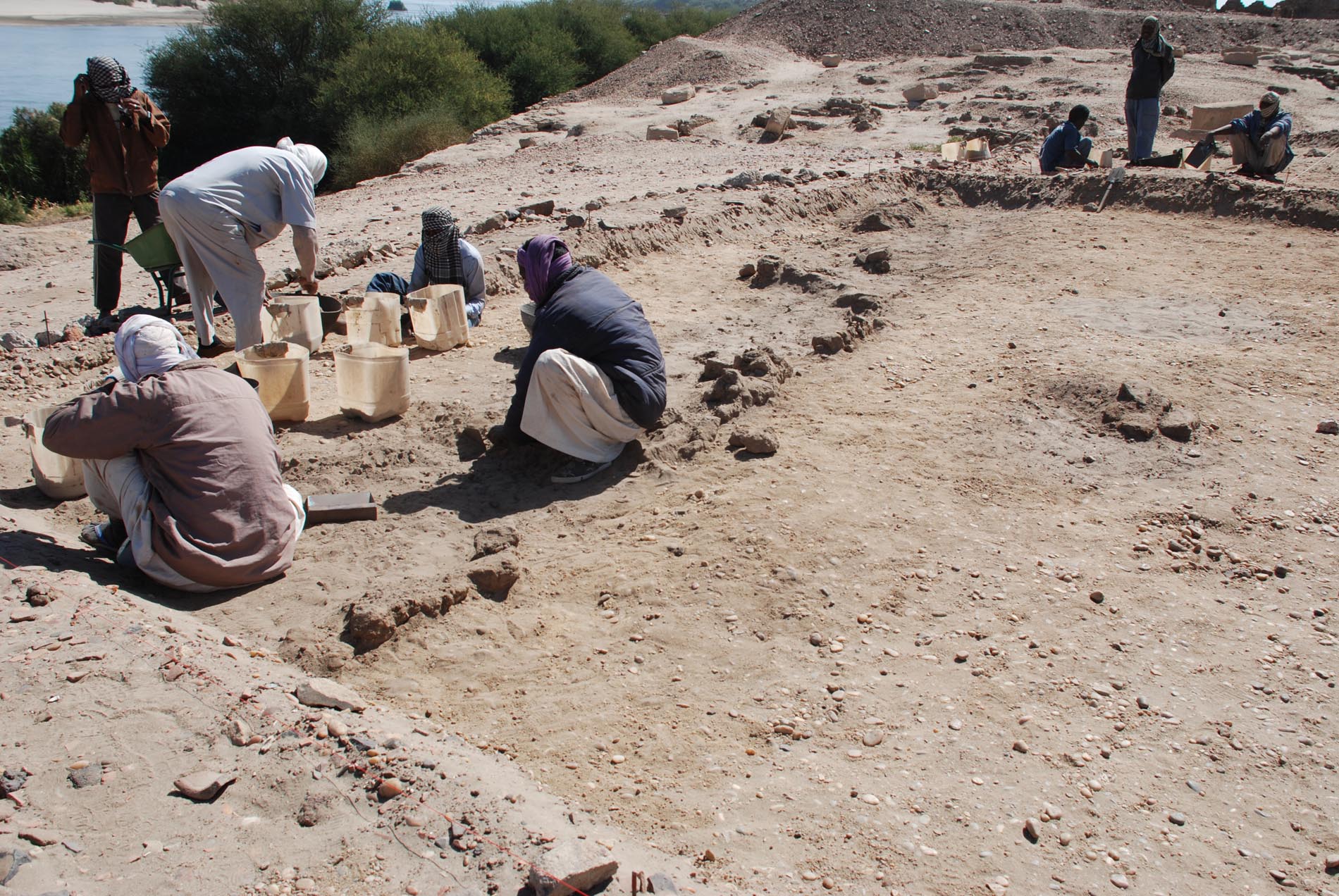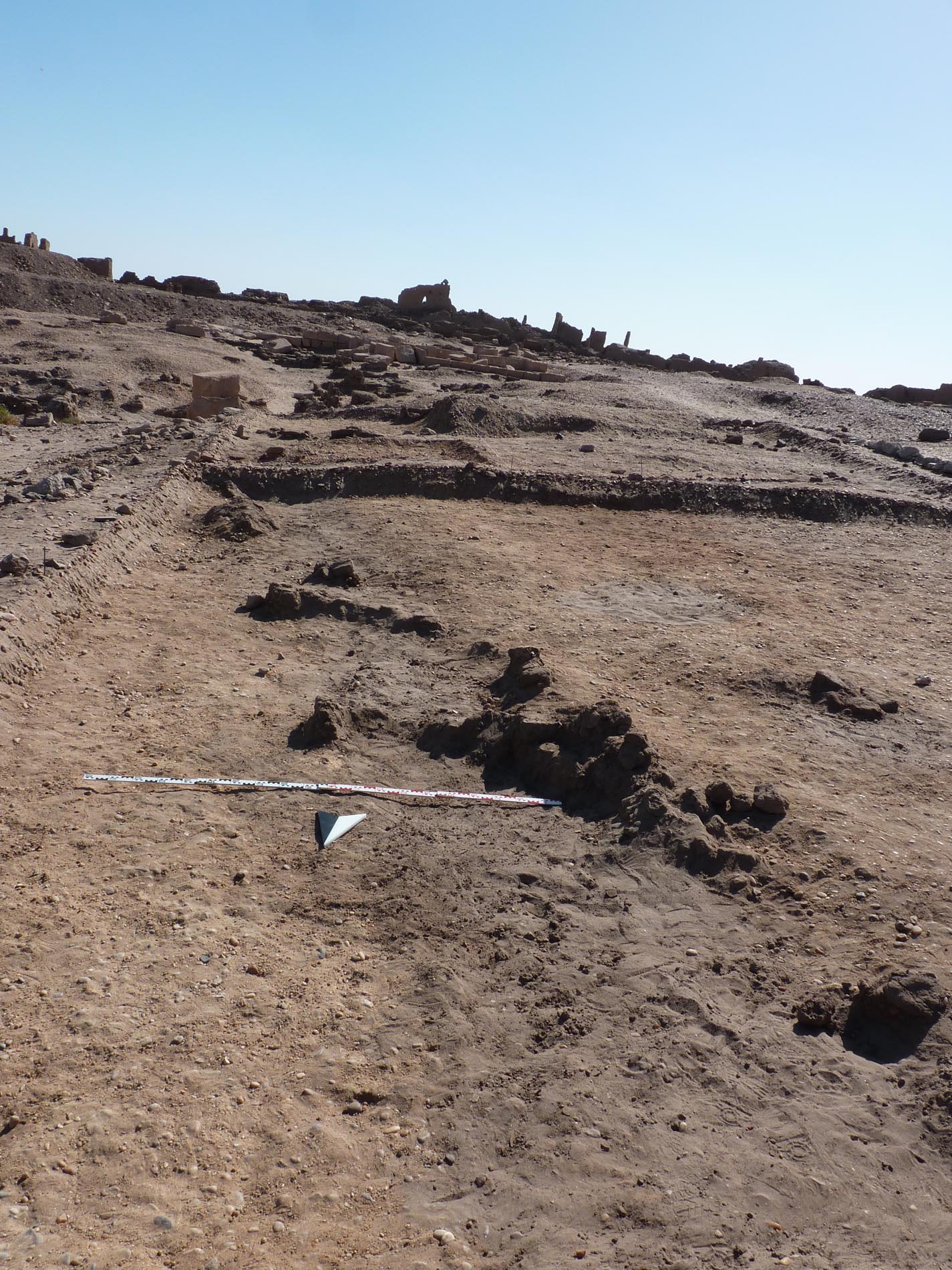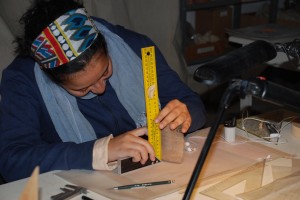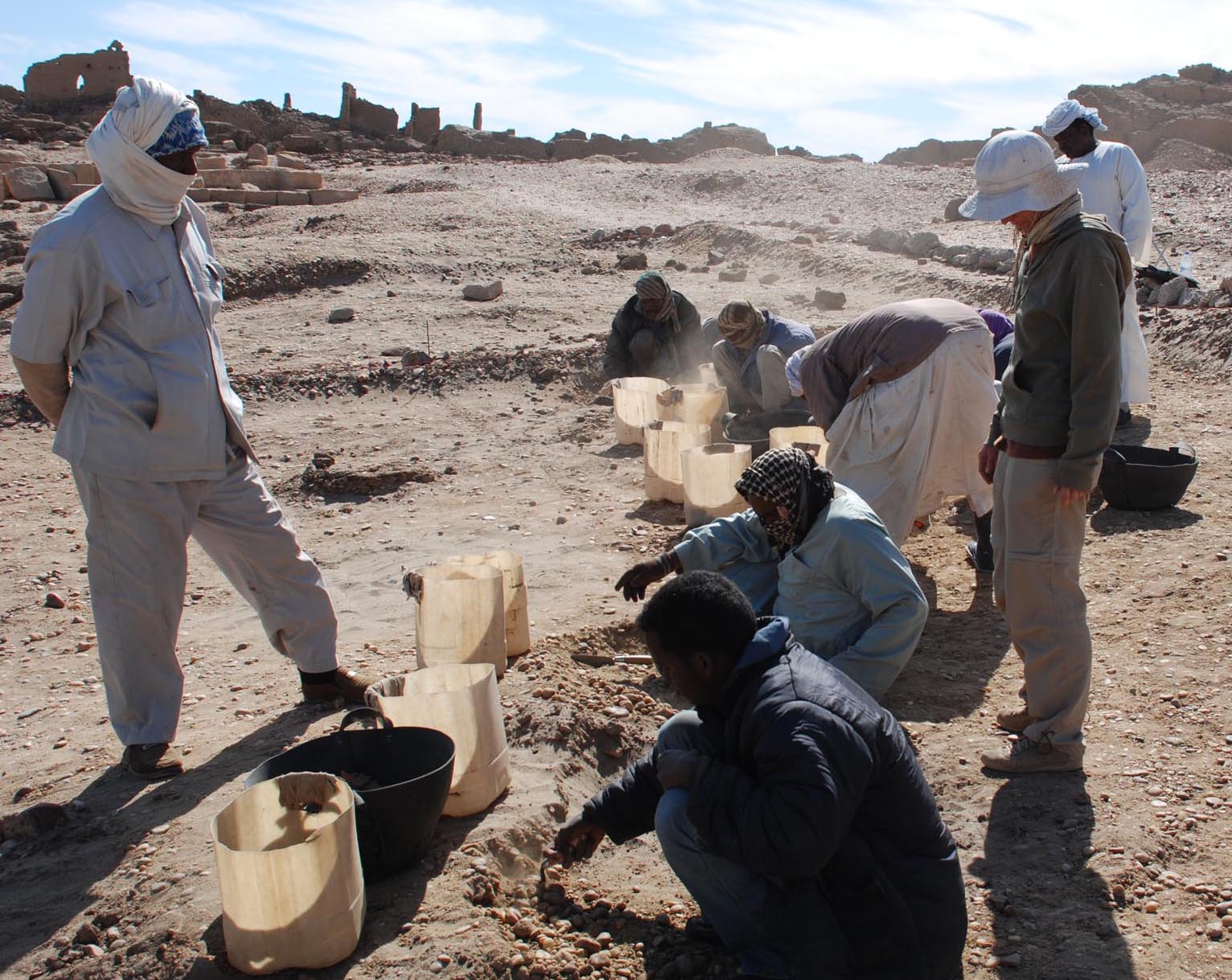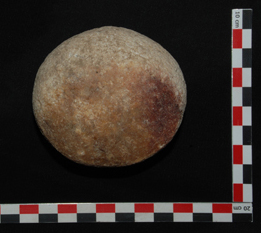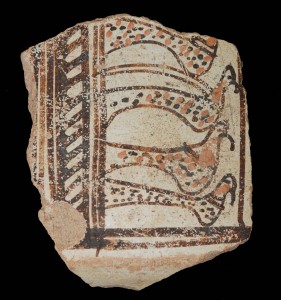After finishing the detailed drawing of storage bin 14, we finally could move the in situ pots! We managed to recover the complete beaker in one piece – a great moment of joy for 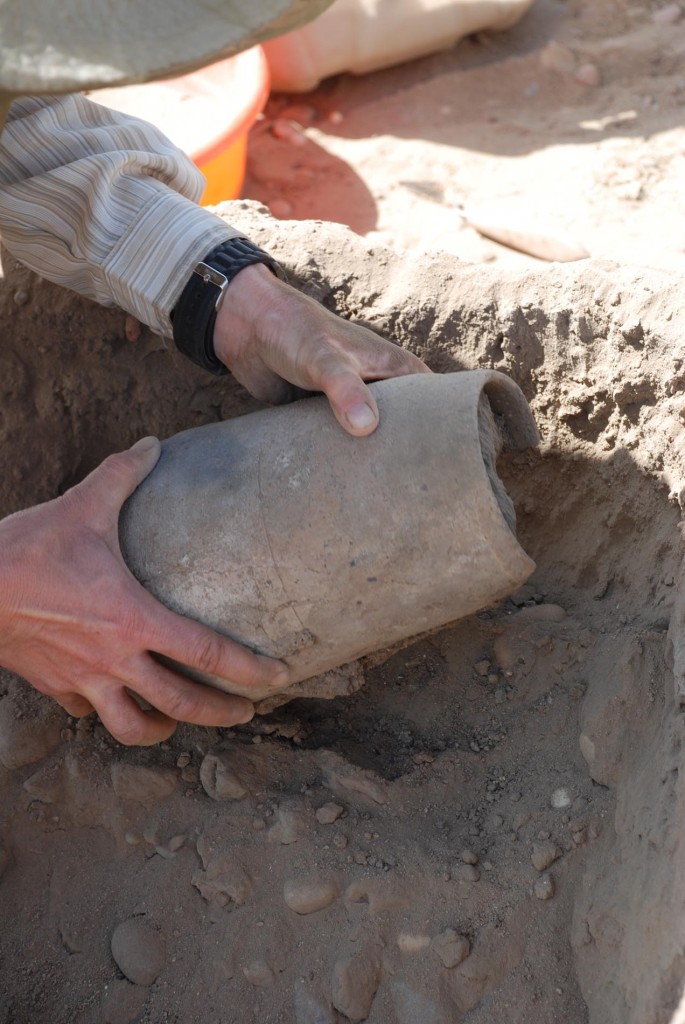 the ceramicist!
the ceramicist!
The smaller red burnished vessel was broken and fell into some pieces, which we will be able to fix together, reconstructing the jar.
Having the pots in our hands, and being able to analyse them closely, I can now also confirm their presumed dating: both are early 18th Dynasty, pre-dating Thutmose III and thus early than the nearby Temple A.
Therefore it is safe to assume that feature 14 belongs to an early occupation phase of SAV1E during the very beginning of the New Kingdom – just on the arrival of the Egyptians on Sai Island!

